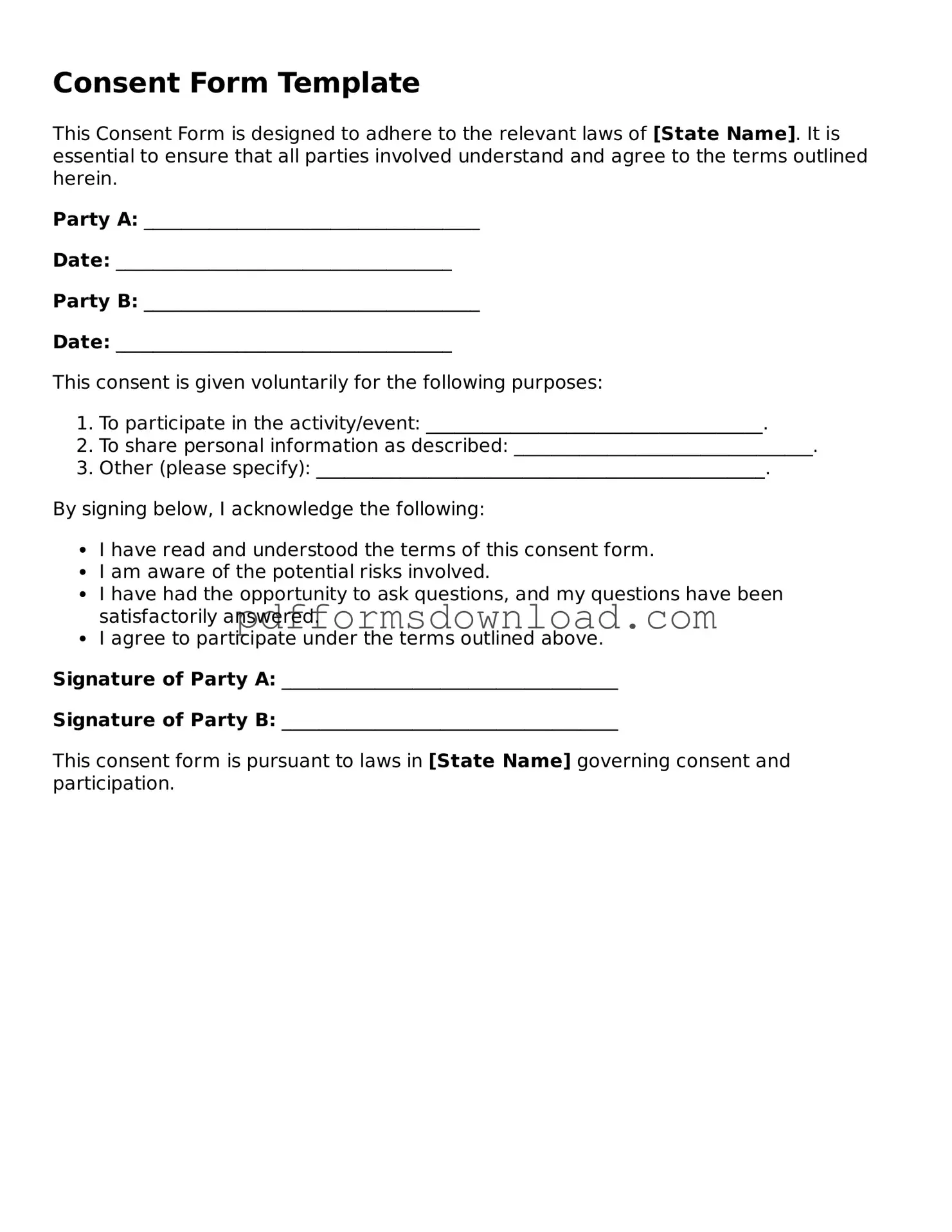What is a consent form and why is it important?
A consent form is a document that outlines the agreement between a participant and an organization or individual conducting a study, treatment, or service. It is crucial because it ensures that participants are fully informed about the nature of the activity, the potential risks involved, and their rights. By signing the form, participants indicate their willingness to proceed, thereby protecting both their interests and those of the organization. This transparency fosters trust and ethical standards in various fields, including medical research, therapy, and educational programs.
What information should be included in a consent form?
A well-crafted consent form should include several key elements. First, it must clearly state the purpose of the study or service. Participants should know what they are getting into. Next, the form should outline any potential risks or discomforts that may arise, as well as the benefits of participation. Additionally, it should explain how participants' data will be used, stored, and protected. Lastly, it’s important to provide contact information for someone who can answer questions or address concerns. This comprehensive approach ensures participants can make informed decisions.
Can a participant withdraw their consent after signing the form?
Yes, participants have the right to withdraw their consent at any time, even after they have signed the form. This right is fundamental to ethical practices. If someone feels uncomfortable or changes their mind, they should be able to exit the study or service without facing any penalties or negative consequences. It’s essential for organizations to communicate this right clearly in the consent form, ensuring participants feel empowered and safe throughout their involvement.
Is verbal consent sufficient, or is a written consent form necessary?
While verbal consent can be acceptable in certain informal situations, a written consent form is generally necessary for more formal or sensitive activities, such as medical procedures or research studies. A written form provides a clear record of the participant's agreement and helps protect both parties in case of disputes. It also reinforces the importance of informed consent, as it typically requires participants to read and understand the terms before agreeing. Therefore, when in doubt, opting for a written consent form is advisable to ensure clarity and legal protection.
